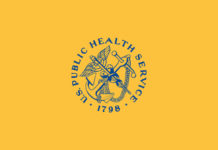A new study from the Society for the Study of Addiction validated the value of the U.S. Substance Abuse and Mental Health Services Administration’s (SAMHSA) Screening, Brief Intervention, and Referral to Treatment (SBIRT) programs in treating substance use disorders.
“[SBIRT] implementation was associated with improvements in treatment system equity, efficiency and economy,” researchers wrote.
Researchers from the University of Connecticut School of Medicine and the University of North Carolina at Greensboro evaluated two SAMHSA cohorts that screened more than 1 million patients. The patients in the cohorts tended to be middle-aged and were more likely to be women. Alcohol abuse was the most commonly reported addiction, and although illicit drug use was reported less commonly, it was still prevalent, with 41.8 percent of the first cohort and 45.8 percent of the second cohort reporting a substance use disorder involving illicit drugs.
For California State University of Fullerton, which was awarded a $258,823 grant from SAMHSA earlier this year to implement an SBIRT program, the opportunity for academic and community partnerships “offers positive change and improvement for community needs,” according to Beverly Quaye, assistant professor in the university’s School of Nursing and College of Health and Human Development.
The university’s SBIRT program will commence this spring semester, and the grant funding will be used across three departments including the School of Nursing, the Department of Social Work, and the Department of Human Services.
“We’re hoping to make an impact on patient’s health in primary care by starting to look at and ask questions about their substance use,” Quaye said.
Early intervention programs can be a valuable resource to those who may suspect they have a substance use disorder. Programs like SBIRT focus on early identification of a substance use disorder and integrating the management of addiction into primary care. The program was initiated by SAMHSA’s Center for Abuse Treatment in 2003. Since then, the agency has funded 17 Medical Residency Cooperative Agreements, 32 State Cooperative Agreements, and 12 Targeted Capacity Expansion Campus Screening and Brief Intervention (SBI) Grants, and 14 SBIRT Medical Professionals Training grants.
A unique component of SAMHSA’s program is its inclusion of a brief treatment option, which can work in conjunction with a referral to more intensive, specialized facilities for substance use disorders.
The study also focused on the effectiveness of brief interventions and brief therapy and found that brief therapy provides a more intensive level of care than brief intervention. Brief therapy also offered a more convenient, accessible and flexible service than traditional outpatient therapy, researchers concluded. While brief intervention is primarily effective with alcohol users, brief therapy had more of an impact in reducing illicit drug use.
The key to sustaining SBIRT programs is finding alternative sources of funding, or becoming integrated with established health care systems, researchers stated. Program staff identified four… (continue reading)
















